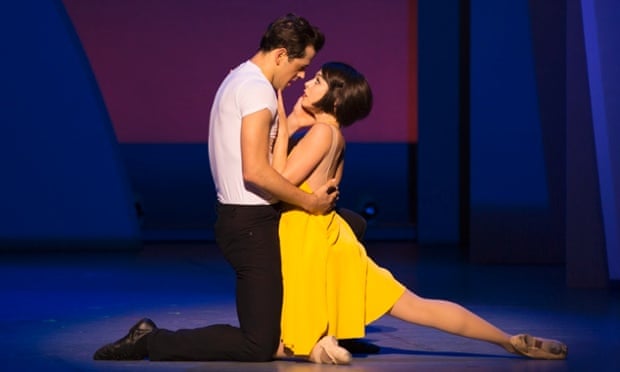The Royal Ballet recently announced details of the 2015/16 season and I am very excited! This is what I am most looking forward to:
 - Raven Girl will be returning to the stage in October. This was one of the first performances I saw at the Royal Opera House and ultimately what got me excited about the Royal Ballet. It was the first time I saw Sarah Lamb perform (the role of Raven Girl was created for her), and I have been her fan ever since. It is also the my favorite Wayne McGregor ballet and the final pas-de-deux between Sarah Lamb and Eric Underwood remains the most beautiful thing I've ever seen on stage. You can watch the rehearsing the scene here.
- Raven Girl will be returning to the stage in October. This was one of the first performances I saw at the Royal Opera House and ultimately what got me excited about the Royal Ballet. It was the first time I saw Sarah Lamb perform (the role of Raven Girl was created for her), and I have been her fan ever since. It is also the my favorite Wayne McGregor ballet and the final pas-de-deux between Sarah Lamb and Eric Underwood remains the most beautiful thing I've ever seen on stage. You can watch the rehearsing the scene here.
- Elizabeth - a ballet about the life of Elizabeth I. This ballet was created by Will Tuckett for the Royal Ballet in 2013 and was performed at the Royal Navel College in Greenwich. It will be coming to the Linbury Studio in January. I don't know much about it, but it sounds interesting.
 - A Christopher Wheeldon triple bill, including a new work, in February AND his Winter's Tale returning to the main stage in April.
- A Christopher Wheeldon triple bill, including a new work, in February AND his Winter's Tale returning to the main stage in April.
- Liam Scarlett's new ballet, Frankenstein, coming to the main stage in May. Scarlett has an incredible talent for story-telling through choreography and seems to have a thing for dark themes. I love his Hansel and Gretel.
- Orphee et Eurydice - not ballet but opera for a change. The reason I am excited about this one is because of choreographer Hofesh Shechter's involvement as co-director. His recent collaboration with the Royal Ballet was incredible, and I am excited to learn that he will be collaborating with the Royal Opera House again.
Further details of the Royal Ballet's 2015/16 season can be found here.
Further details of the Royal Ballet's 2015/16 season can be found here.







